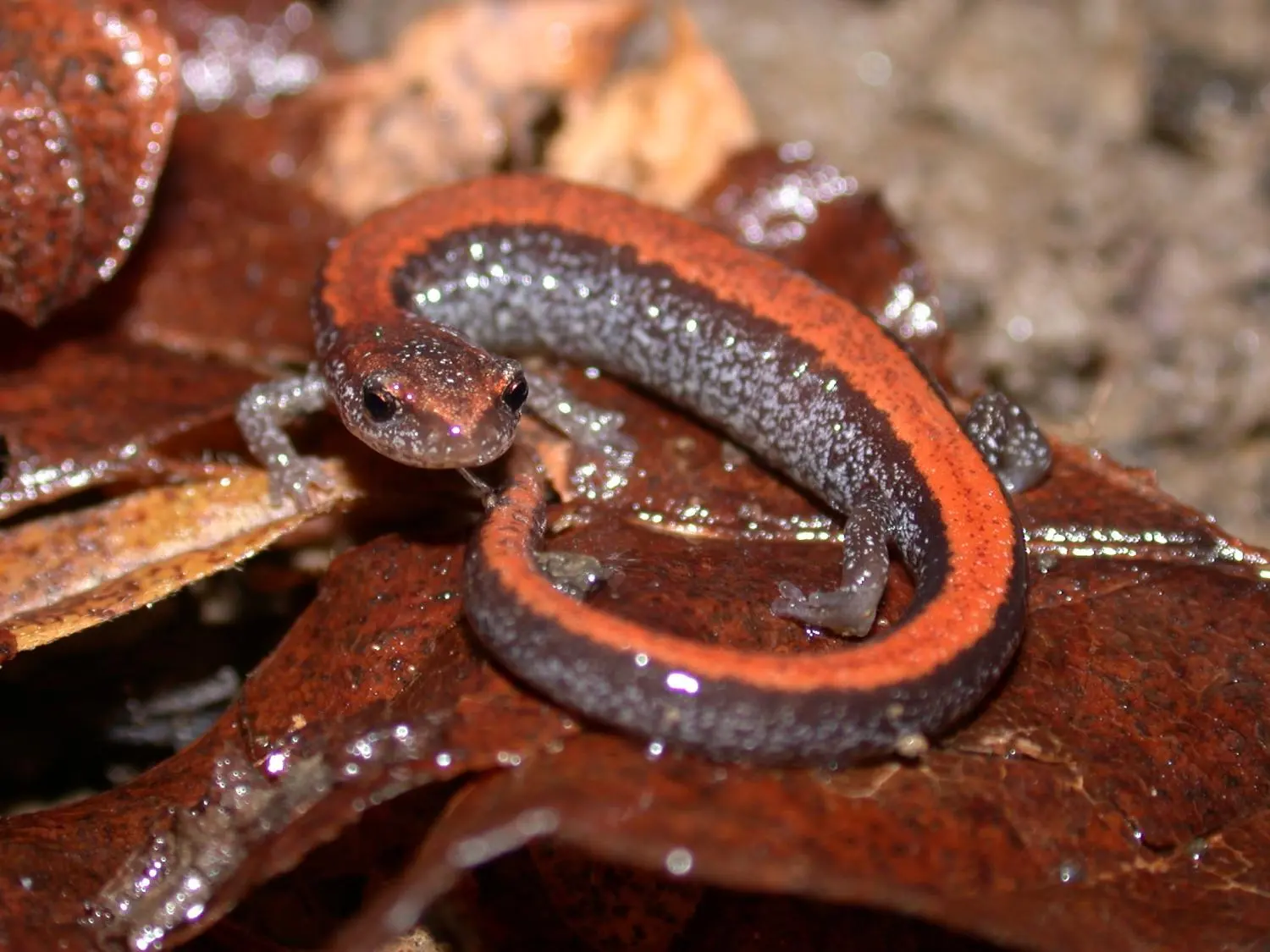This news comes as scientists assess potential costs of a looming amphibian disease before it arrives on US shores
Two recent amphibian-focused studies shed light on the ecological importance of red-backed salamanders, while confirming that proactive measures would prevent costly impacts from a wildlife disease spreading across Europe that has not yet reached North America.
Scientists have long known that red-backed salamanders are plentiful in eastern North America, but a recent study revealed that their population density and biomass in the region far exceed expectations. Researchers estimate an average of 5,300 salamanders per football field-sized area of forest in the Northeast. Despite their modest size—only about 3 inches long—the sheer number of red-backed salamanders gives them one of the highest animal biomass levels in the Northeast, rivaling or surpassing that of white-tailed deer, aside from insects.
This groundbreaking study, titled “Range-wide Salamander Densities Reveal a Key Component of Terrestrial Vertebrate Biomass in Eastern North American Forests,” conducted by the U.S. Geological Survey and various partner institutions, is the first to calculate the density and biomass of this common, yet seldom-seen species across its entire range.
The study’s findings highlight the astonishing presence of red-backed salamanders in the Northeast, suggesting that these and other amphibians play a more significant role in temperate ecosystems than previously thought.
“The substantial biomass of red-backed salamanders indicates that they likely play a critical role in the ecological health of northeastern forests,” said Evan Grant, lead author and USGS research wildlife biologist. “If red-backed salamanders were to vanish, it could trigger profound ecosystem-level changes.”
Salamanders, including the red-backed variety, are small and often remain underground, making them easy to overlook. Grant refers to salamanders and other amphibians as “hidden biodiversity” because, despite their abundance, they are rarely seen. However, their ecological importance should not be underestimated. Salamanders consume prey that larger animals cannot and are also a crucial food source for other creatures, making them a vital part of the food web.
“Salamanders are essential in forest ecosystems,” said David Miller, professor of wildlife ecology at Penn State and co-author of the study. “They sit atop the food chain on the forest floor, where organic matter breaks down into soil that supports a complex network of life. Salamanders are so integral to this cycle that they serve as indicators of forest health.”
Unfortunately, just as scientists are beginning to grasp the full extent of salamanders’ ‘hidden biodiversity’ and ecological importance, a new wildlife disease poses a significant threat. Batrachochytrium salamandrivorans (Bsal), a fungal disease closely related to the chytrid fungus already devastating amphibian populations worldwide, was first discovered in the Netherlands in 2013. Since then, Bsal has decimated salamander populations in central Europe and continues to spread.
While Bsal has not yet reached the U.S., scientists and wildlife managers are preparing for its arrival. The North American Bsal Task Force is working to prevent the disease’s spread and minimize its impact in North America. However, natural resource managers faced a challenge: enacting proactive management for a disease not yet present on U.S. soil required evidence that such an approach would be more effective than waiting to respond after the disease is detected.
Grant co-authored another recent paper to address this issue, which tested various proactive and reactive management strategies to predict their impact on salamander populations over time. The study, titled “Proactive management outperforms reactive actions for wildlife disease control,” used computer modeling to demonstrate that proactive management is indeed more successful at preventing salamander population declines than reactive measures or doing nothing at all.
“If we take no action against Bsal, our model predicts catastrophic outcomes for North American salamander species,” said Molly Bletz, assistant professor of disease ecology at Penn State and lead author of the second study. “This research strongly supports proactive management. If we want these at-risk salamander species to survive, taking action before Bsal arrives is crucial.”
The proactive strategies considered include:
- Limiting disease spread by installing barriers or increasing habitat complexity;
- Reducing Bsal spores in aquatic environments by raising water temperatures, increasing salinity, or boosting zooplankton that consume fungi;
- Enhancing amphibian health through supplemental feeding, promoting beneficial anti-fungal microbes, or vaccination.
While this study did not assess how proactive management might affect other ecosystem components, visitor satisfaction, or costs, Bletz, Grant, and others are already working on evaluating these factors to provide a comprehensive understanding of the benefits of proactive versus reactive management.
“Given our new understanding of salamanders’ prevalence and the clear benefits of proactive management, protecting the ‘hidden biodiversity’ of amphibians is more critical than ever,” said Bletz.
